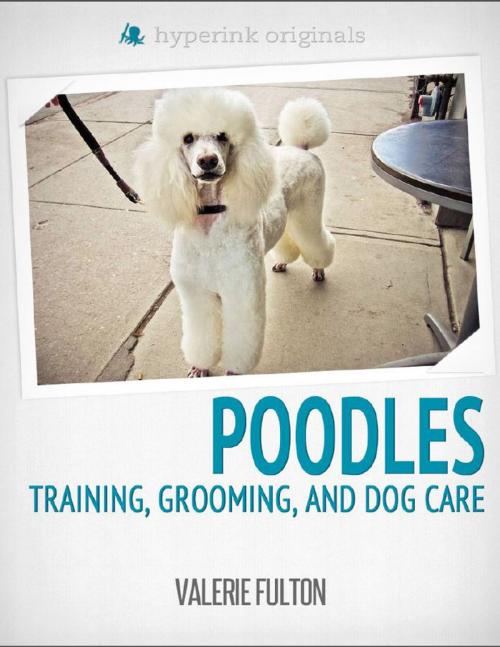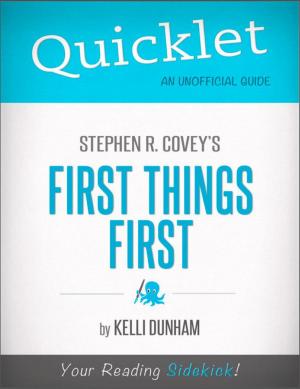Poodle: Training, Grooming, and Dog Care
Nonfiction, Reference & Language, Reference, Guides & Handbooks| Author: | Valerie Fulton | ISBN: | 9781614646211 |
| Publisher: | Hyperink | Publication: | July 30, 2012 |
| Imprint: | Hyperink | Language: | English |
| Author: | Valerie Fulton |
| ISBN: | 9781614646211 |
| Publisher: | Hyperink |
| Publication: | July 30, 2012 |
| Imprint: | Hyperink |
| Language: | English |
ABOUT THE BOOK
“A dog is a bond between strangers.”
John Steinbeck
When you own a poodle, you are guaranteed to attract attention. Thanks to its elegant posture and prancing gait, your dog will stand out in a crowd; thanks to the breed’s gregarious nature, it will charm everyone it meets. The poodle is a companion dog par excellence: intelligent and witty, devoted to its pack members, and eager to please. It is the only breed that comes in three sizes: toy, miniature, and standard. There is a poodle for every activity level and lifestyle.
Yet there is also no breed of dog more misunderstood than the poodle. Despite the fussy and sometimes preposterous styling of their coat, the dog underneath was a working breed originally used to retrieve waterfowl. The traditional clip, with its poufs and leonine mane, protected the internal organs and joints from the frigid water into which the dogs dove after fallen ducks and geese.
True to its heritage, the poodle is a “real dog” that excels at any number of jobs. Poodles have been used to detect cancer, as therapy and rescue dogs, and even as police dogs. While the miniatures have a long history as circus performers, poodles also are stars at agility and flyball. Standards are still being bred as hunting dogs, with a revival of interest in using them for this purpose.
But for most prospective owners, the important question is, “Do poodles make good pets?” To that, the answer is an unequivocal yes! Standards in particular are excellent family dogs, having great tolerance and affection for children, while the smaller breeds make perfect companions for people with less mobility. The poodle is a happy, fun-loving, and enthusiastic dog, who brightens his owners’ days.
EXCERPT FROM THE BOOK
Poodles now range in size from “teacup” to quite large, as selective breeding pushes the limits at both ends of the spectrum. There are three recognized sizes in the United States: toy (under 10” at the shoulder), miniature (at least 10” but less than 15”), and standard (at least 15”). Although the sizes all fall in the same breed category, with the same conformation standards and disposition, there are some basic differences.
Standards probably make the best family dogs. Although they are large, with adult males pushing the upper limit of 30” at the shoulder and weighing over 70 pounds, they tend to do well with one long walk a day and regular opportunities to play and/or train. They are said to be more aloof than the smaller poodles, but my standard is a lovable oaf of a dog who greets all people and dogs he meets with reckless enthusiasm, and many other owners that I meet report that the same is true of their dogs. Training while they are still young will help this dog to develop good manners and to focus the excessive prey drive that some of these standards have.
Miniatures make excellent companion dogs; unlike standards, which bond more or less equally with all members of the family, they tend to attach to one person exclusively. Although they are technically small dogs, they have high energy and must not only go for daily walks but also have some “job” to absorb their mental energy. Miniatures are very easy to train, and owners who engage in daily training sessions with their dogs will have dogs that suffer less from the nervous energy that can result in this size poodle when it thinks it is in charge of the household.
Toy poodles are the perfect dogs for elderly people with lower mobility. They are friendly and intelligent, like all poodles, and they have a high energy level. But they do well with a short daily walk and play retrieving toys indoors; they are a good dog for apartment living. Toys and miniatures both are prone to excessive barking, so proper training is essential to prevent this trait...
...buy the book to keep reading!
ABOUT THE BOOK
“A dog is a bond between strangers.”
John Steinbeck
When you own a poodle, you are guaranteed to attract attention. Thanks to its elegant posture and prancing gait, your dog will stand out in a crowd; thanks to the breed’s gregarious nature, it will charm everyone it meets. The poodle is a companion dog par excellence: intelligent and witty, devoted to its pack members, and eager to please. It is the only breed that comes in three sizes: toy, miniature, and standard. There is a poodle for every activity level and lifestyle.
Yet there is also no breed of dog more misunderstood than the poodle. Despite the fussy and sometimes preposterous styling of their coat, the dog underneath was a working breed originally used to retrieve waterfowl. The traditional clip, with its poufs and leonine mane, protected the internal organs and joints from the frigid water into which the dogs dove after fallen ducks and geese.
True to its heritage, the poodle is a “real dog” that excels at any number of jobs. Poodles have been used to detect cancer, as therapy and rescue dogs, and even as police dogs. While the miniatures have a long history as circus performers, poodles also are stars at agility and flyball. Standards are still being bred as hunting dogs, with a revival of interest in using them for this purpose.
But for most prospective owners, the important question is, “Do poodles make good pets?” To that, the answer is an unequivocal yes! Standards in particular are excellent family dogs, having great tolerance and affection for children, while the smaller breeds make perfect companions for people with less mobility. The poodle is a happy, fun-loving, and enthusiastic dog, who brightens his owners’ days.
EXCERPT FROM THE BOOK
Poodles now range in size from “teacup” to quite large, as selective breeding pushes the limits at both ends of the spectrum. There are three recognized sizes in the United States: toy (under 10” at the shoulder), miniature (at least 10” but less than 15”), and standard (at least 15”). Although the sizes all fall in the same breed category, with the same conformation standards and disposition, there are some basic differences.
Standards probably make the best family dogs. Although they are large, with adult males pushing the upper limit of 30” at the shoulder and weighing over 70 pounds, they tend to do well with one long walk a day and regular opportunities to play and/or train. They are said to be more aloof than the smaller poodles, but my standard is a lovable oaf of a dog who greets all people and dogs he meets with reckless enthusiasm, and many other owners that I meet report that the same is true of their dogs. Training while they are still young will help this dog to develop good manners and to focus the excessive prey drive that some of these standards have.
Miniatures make excellent companion dogs; unlike standards, which bond more or less equally with all members of the family, they tend to attach to one person exclusively. Although they are technically small dogs, they have high energy and must not only go for daily walks but also have some “job” to absorb their mental energy. Miniatures are very easy to train, and owners who engage in daily training sessions with their dogs will have dogs that suffer less from the nervous energy that can result in this size poodle when it thinks it is in charge of the household.
Toy poodles are the perfect dogs for elderly people with lower mobility. They are friendly and intelligent, like all poodles, and they have a high energy level. But they do well with a short daily walk and play retrieving toys indoors; they are a good dog for apartment living. Toys and miniatures both are prone to excessive barking, so proper training is essential to prevent this trait...
...buy the book to keep reading!















